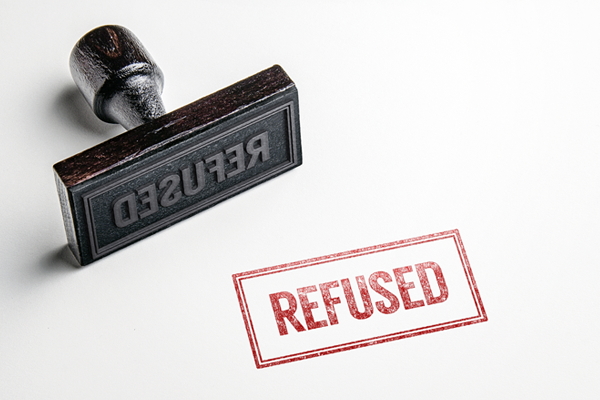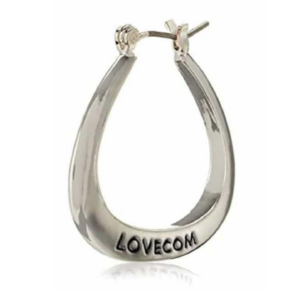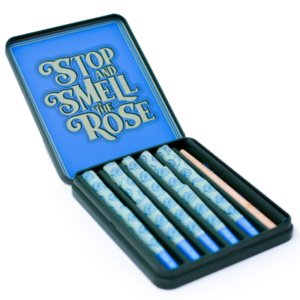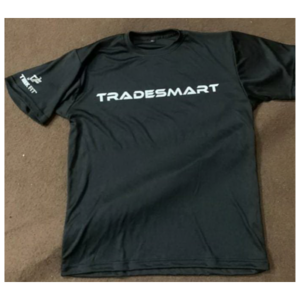Specimen Refusals: Tips on How to Avoid an Ornamental Refusal and Submit Strong Specimens to the USPTO

When filing “proof of commercial use” with the USPTO, the USPTO requires applicants to use a word, phrase or symbol as a trademark- not just as a part of ornamental design. If the USPTO examining attorney believes that the proof of use (called a “specimen”) is “ornamental” then they will refuse the application on the grounds that the specimen fails to show the word, phrase or design used as a trademark.
The refusal might look something like this:
REGISTRATION REFUSED – MARK AS USED ON SPECIMEN IS MERELY ORNAMENTAL Registration is refused because the applied-for mark as used on the specimen of record is merely a decorative or ornamental feature of the goods and, thus, does not function as a trademark to indicate the source of applicant’s goods and to identify and distinguish them from others. Trademark Act Sections 1, 2, and 45, 15 U.S.C. §§1051-1052, 1127; see In re Villeroy & Boch S.A.R.L., 5 USPQ2d 1451, 1454 (TTAB 1987); TMEP §§904.07(b), 1202.03 et seq.

What does this refusal really mean? How can applicants avoid it? Below are some helpful tips on the USPTO’s “merely ornamental” refusal, with ways to both avoid it and overcome it.
What is ornamental use?
Many trademark owners will create designs and logos that are visually appealing in order to capture the attention of their customers and great awareness of the new products. Companies may feature names and designs on the front of shirts, water bottles, stickers, jewelry, and other items as a part of the product’s overall visual appeal. However, it is important to keep in mind that the visual appeal of a product is NOT the function of trademarks, so you should ensure your brand and mark are protected accordingly. Uses of words and phrases that are just attractive designs without the underlying branding and awareness aren’t trademarks – and won’t be accepted for registration under the USPTO’s rules.
“Ornamental use” is when a company uses a trademark not to show the source of their goods or services, but rather to decorate or enhance their products by the inclusion of the mark. While this is a common practice for many businesses, this cannot be the only source of protection and use for a trademark.
Businesses and applicants should be careful to use their marks in a manner that clearly shows the mark is designating the source of origin, or that it is coming from their business. For some goods, this may be appropriately used on the packaging of the good if the mark is placed in a way that the consumer would see it as referring to the business.
The biggest question to ask is this:
If I was a consumer looking for the “brand” of this product, where would I look?
Typically, the answer to this question will be on the packaging, hang tag, tag, or other place where brands typically exist.
How to create a strong trademark specimen.
“Ornamental use” does not mean that you cannot use your trademark as a design feature of your apparel or products. Instead, trademark owners should feel free to use their mark in artistic ways as long as they still keep the mark in a proper place. For example, companies like Nike and Adidas use their names and symbols on the front of their shirts all the time. However, if you look at any ADIDAS or NIKE clothing, you will also see the name appearing in the printed tags, the hangtags, and virtually every other place consumers would expect to see a brand.
The big takeaway here is that trademarks should always be a source of origin, not just a catchy saying that looks good on a t-shirt or an attractive design. This may be difficult to understand, so it is helpful to provide you with a few specific tips on how to put this into practice yourself.
The three examples below were all found to be ornamental use by the USPTO.
Examples of strong trademark specimens
Imagine you are a graphic artist and you begin selling your designs online in a variety of ways. If you are selling framed prints online, for example, it is very important to know that the art in the print itself cannot usually be protected under trademark law. That is more of a function of copyright protection, which uses its own set of rules. However, consider adding a badge or sticker back of a print with the mark affixed to it to show consumers where the design came from. Here, the sticker shows where the print is coming from, rather than simply what is on the print itself. Another place might be on a plastic sleeve the print comes in, on the plastic itself, or as a seal or something similar.
It gets more complicated from here. Instead of prints, let’s say you want to sell the sticker itself with your art on it. Now, this sticker itself with your print on the front is not functioning purely like the placement of a brand or mark, it is the product itself. This is true even if it is your company name or something you consider your brand. For a sticker, you could use the sticker backing, or packaging of the sticker and affix your mark to the packaging.
After your successful art print and sticker sales, you may decide to expand into putting your art on a shirt so your loyal customers can show their support everywhere you go. You should place your mark on tags of the shirt or in places that people generally think are where a mark may be, like the upper right corner of the shirt. Again, what is important is while you can sell shirts with your art on it as much as you like, you must make sure the mark you are looking to register is only showing your brand in some way on the shirt or tags, even if it pops up elsewhere in a more decorative fashion.
For products that the brand must somehow be put on the product itself, like a water bottle, best practices would dictate using some sort of sticker or paper wrapper as a way to label the product with your brand. However, placing the mark on the bottom of the bottle, or in a place that the consumer would look at and immediately know it was referring to a brand, would also be an easy way to properly make use of your mark. Again, it is all about what the consumer would think the mark is referring to, not just putting the mark on the product.
What do I do if I’ve already submitted an ornamental specimen?
If you’ve already received a notice from the USPTO stating: “REGISTRATION REFUSED – MARK AS USED ON SPECIMEN IS MERELY ORNAMENTAL” or something similar, don’t panic. This is a correctable issue, but it must be corrected according to the USPTO’s rules.
First, you cannot submit any new pictures created after your application date (or Statement of Use date.) This is the most common mistake made by applicants. The USPTO Office Action specifically states that additional pictures and specimens can be submitted only if they were in use before the relevant use date, which would be the application filing date or the date you filed a Statement of Use. So if you got this refusal, added tags or hangtags to your t-shirts, and resubmitted, this would open your application up to challenge in the future (through an opposition, cancellation, expungement, or reexamination) on the grounds that you did not have proper “use” when you said you did. You would be signing a false statement to the USPTO and this should be avoided at all costs.
Instead, you should amend the basis of the application to Section 1(b) of the Lanham Act, called an “intent to use” application. If there are no other issues with the application, then the amendment will allow the application to proceed to the opposition phase. The new specimen (with a fee) can then be submitted about three to four months later, after the application clears the opposition phrase.
If you received an ornamental refusal in response to a Statement of Use, you have a lot less options and if it’s correctable, there will be a very short time period to make the correction. Contact an attorney immediately to discuss the options, because an ineffective Statement of Use cannot be withdrawn and if there is no time left in the Notice of Allowance period, then the only option might be to file a new application.
Do you need assistance with a trademark matter?
Contact an Attorney Today


